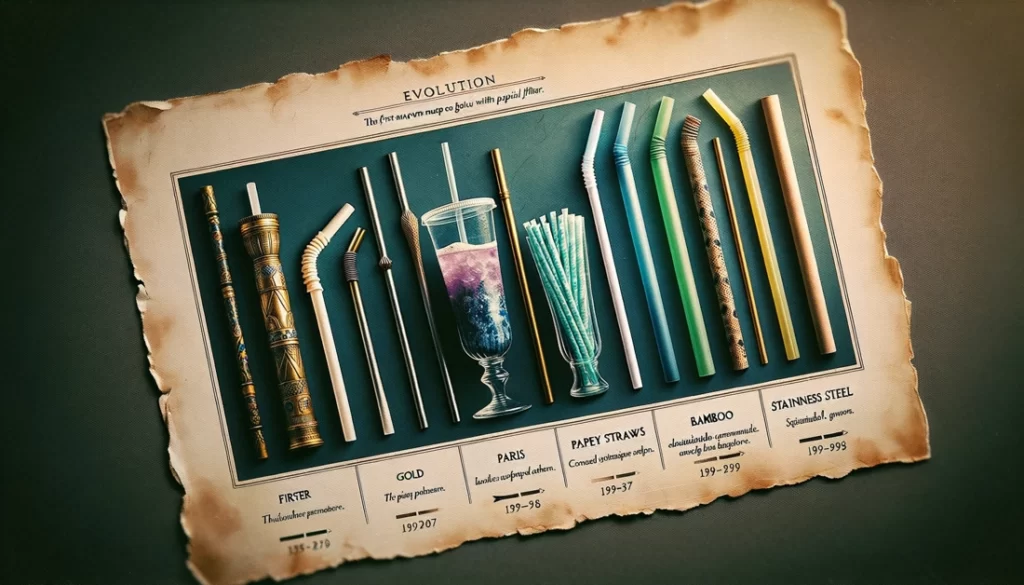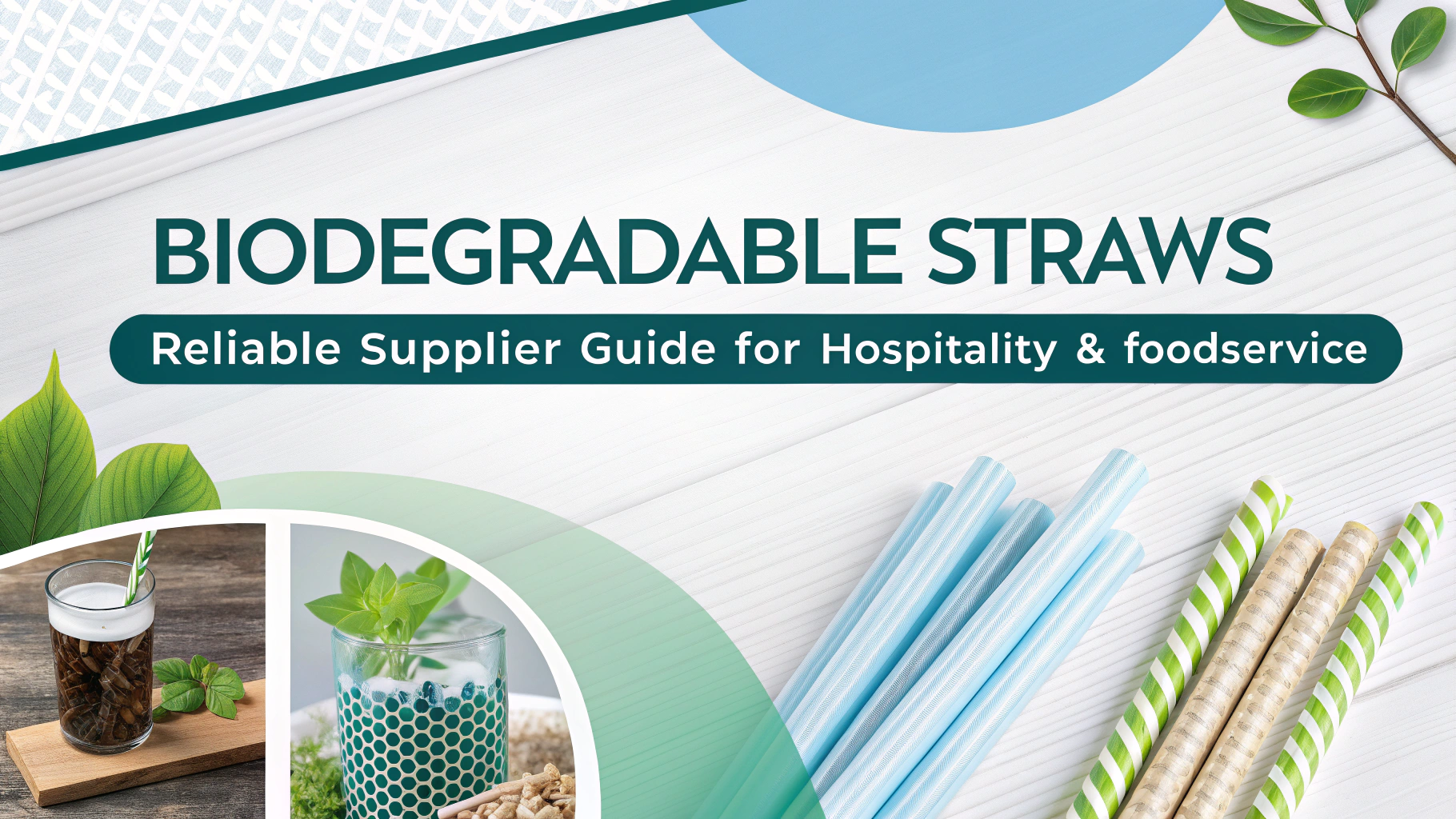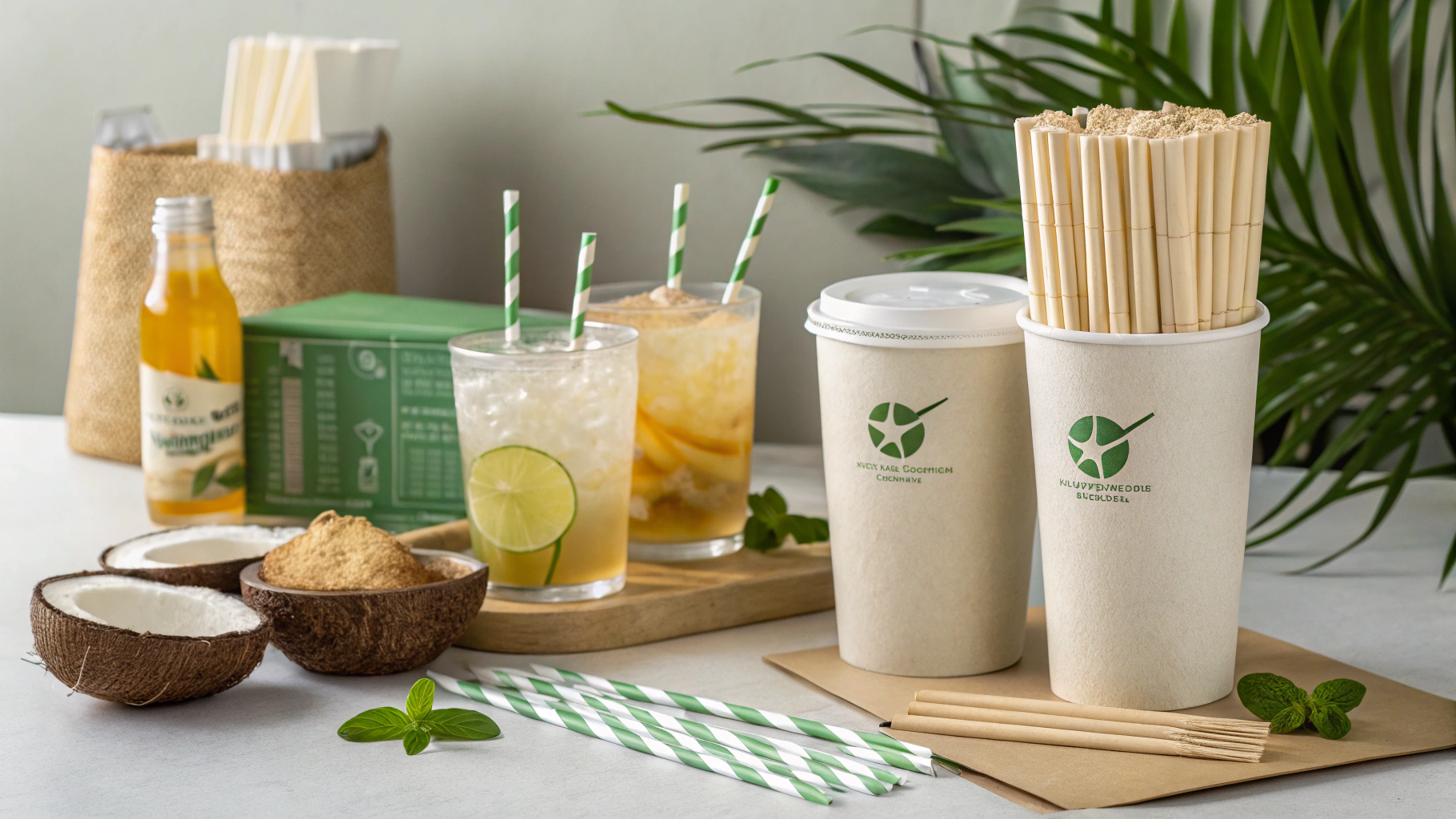
Have you ever sipped a drink and wondered about the origins of that simple yet functional tube you’re using? The drinking straw, something we often take for granted, has a captivating history that’s intertwined with culture, invention, and sustainability. Let’s dive in, shall we?
Cuprins
| Sr# | Titluri |
|---|---|
| 1 | The Ancient Origins |
| 2 | From Gold to Rye Grass |
| 3 | The Birth of the Modern Drinking Straw |
| 4 | Plastics Take Over |
| 5 | Environmental Concerns |
| 6 | Sugarcane Drinking Straws: A Sustainable Alternative |
| 7 | Benefits of Sugarcane Straws |
| 8 | The Global Adoption Journey |
| 9 | The Future of Drinking Straws |
| 10 | Drawing Inspiration from the Past |
The Ancient Origins
Ever thought of our ancestors sipping their favorite beverages? The earliest drinking straws were made from gold, adorned with the blue stone lapis lazuli, and were used by Sumerians to drink beer. This luxury item protected them from fermented sediments that settled at the bottom of their jars.
From Gold to Rye Grass
With time, the extravagant gold straws gave way to more practical ones. People turned to natural materials, and straws made of rye grass became popular. However, there was a problem: they turned mushy after some use. You wouldn’t enjoy a sip with a grassy aftertaste, would you?
The Birth of the Modern Drinking Straw
Asta ne aduce la Marvin Stone, omul din spatele paielor de băut de hârtie. La sfârșitul secolului al XIX-lea, iritată de reziduurile de iarbă ale paielor de secară, Stone a înfășurat benzi de hârtie în jurul unui creion, le-a lipit împreună și voilà! S-a născut paiul modern.
Plastics Take Over
Pe măsură ce industriile au evoluat, au evoluat și materialele. Plasticul, fiind ieftin și durabil, părea înlocuitorul perfect pentru hârtie. Până la mijlocul secolului al XX-lea, paiele de plastic dominau scena. Flexibilitatea lor le-a făcut populare, în special în domeniul sănătății, pentru ca pacienții să bea lichide.
Environmental Concerns
However, like a double-edged sword, the durability of plastic became its downfall. Single-use plastic straws began to accumulate, harming marine life and polluting our planet. It was time to reconsider. If only there was a material that combined durability and sustainability?
Sugarcane Drinking Straws: A Sustainable Alternative
Enter sugarcane drinking straws. Harnessing the power of nature, these straws offer an eco-friendly solution. Made from sugarcane fibers, they decompose naturally, ensuring a minimal carbon footprint. Isn’t it incredible how innovation can be rooted in nature’s simplicity?
Benefits of Sugarcane Straws
Not only are sugarcane straws environmentally friendly, but they also provide an enjoyable sipping experience. Free from the problems of rye grass and the environmental concerns of plastic, they seem to be the best of both worlds.
The Global Adoption Journey
Countries and companies across the globe are acknowledging the benefits of sugarcane drinking straws. With bans on single-use plastics, there’s a growing shift towards these sustainable alternatives.
The Future of Drinking Straws
What’s next for the humble drinking straw? As sustainability becomes a global priority, innovations like sugarcane straws set the stage for a greener future.
Drawing Inspiration from the Past
Looking back, it’s evident that the journey of the drinking straw is like a river, constantly flowing and adapting. And just as rivers often lead back to the ocean, our innovations, like the sugarcane drinking straw, are leading us back to nature.
In conclusion, the history of drinking straws is not just a tale of innovation but also a reflection of society’s values and priorities. As we move forward, let’s cherish the lessons of the past and pave the way for a sustainable future.
FAQs:
Q1: When were sugarcane drinking straws introduced?
A1: Sugarcane drinking straws are a relatively recent innovation, gaining prominence in the last decade as an eco-friendly alternative to plastic straws.
Q2: How long do sugarcane drinking straws last in a drink?
A2: Sugarcane drinking straws can last several hours in a drink without getting soggy, making them a viable replacement for single-use plastic straws.
Q3: Are sugarcane drinking straws compostable?
A3: Yes, sugarcane drinking straws are biodegradable and can be composted, returning to nature within a short span.
Q4: How do sugarcane drinking straws differ from paper straws?
A4: While both are eco-friendly, sugarcane straws tend to be sturdier and longer-lasting in drinks compared to paper straws.
Q5: Why is there a push for alternatives to plastic straws?
A5: Plastic straws are non-biodegradable and contribute to environmental pollution, especially harming marine life. Alternatives like sugarcane drinking straws aim to reduce this environmental impact.






